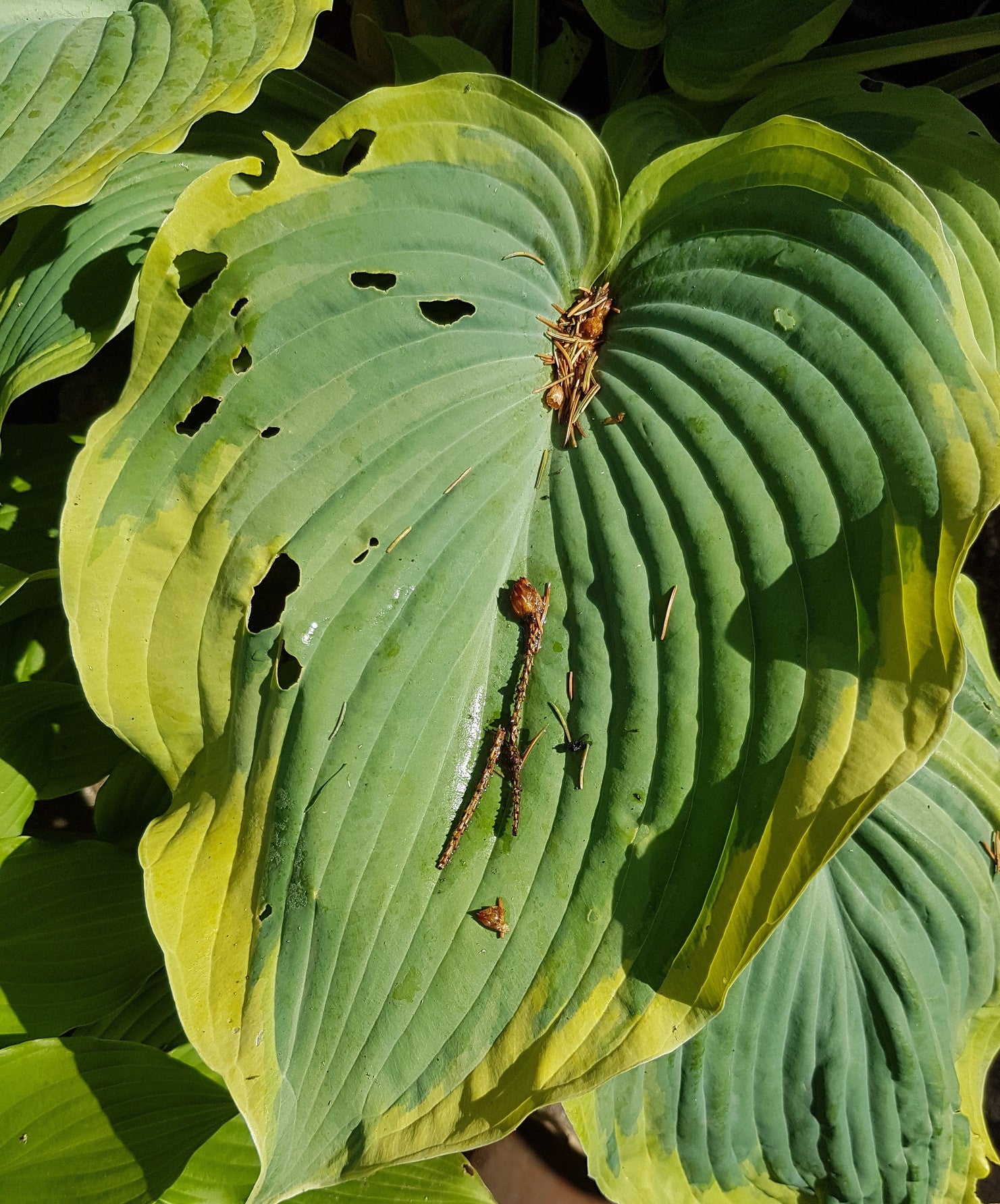
Slugs and snails are a hosta lovers worst nightmare. There is nothing worst than going out to the garden in the morning to find ugly holes in your prized hostas and the greasy track marks of the slimy culprits.
Position
There are many ways of controlling a slug problem in your garden without resorting to slug pellets. Firstly, consider the position of your plants, are they in a pot or a bed? Hostas in pots are much easier to defend against slugs and snails then ones grown in the ground. By growing in a pot, you are able to restrict slugs and snails access to the plant without killing them. Copper bands are extremely effective in many cases, the copper band needs to be wrapped around the pot to create a barrier the slugs will not cross. We have also found that using copper pots to plant your hostas in, is a sure fire way of keeping out the slugs. Be sure to line your pot before planting as copper can leach into the soil and damage the roots.
Organic Slug Repellent
It can be difficult to handle a slug problem when so many methods work for some people and not others. We know many people who have tried dried broken egg shells around their hostas and swear by it when others say it's useless. We believe the best approach to take is to try a range of things and find what's right for you and your garden.
Slug protection methods include:
Are there slug proof hostas?
In short...no. All hostas can be targeted by slugs, no matter the variety. What we can say is, there are varieties that are known to be slug resistant and not eaten as much, but this obviously varies depending on how badly you get slugs in your garden. Generally, the slugs will go for the fleshier leaves and will avoid thick tough leaves. If we put a 'Bob Olson' next to a 'Blue Mouse Ears' for example, without any slug protection, the 'Bob Olson' will more than likely be one the slugs would go for as the leaves are fleshier and easier to eat than the thick leaves of 'Blue Mouse Ears'.
Pellets
If all else has failed, you can use ferric phosphate based pellets. We always say that you should never use metaldehyde based pellets as not only are they extremely dangerous for pets and children they also pose a big risk to wildlife in your garden. Metaldehyde is now banned from sale in the UK.
Ferric phosphate pellets are organic, they target slugs and snails and will not harm birds or mammals that may eat dead or dying slugs and snails. We always try and avoid using pellets at the nursery but if we ever have to, we would use ferric phosphate.
Do you ever use nematodes? I have had some success with them but worry about unforeseen consequences.
Re slugs, when using pots put some fine garden mesh over the bottom of the hole, then some crockery. The mesh should stop the little bu**ers crawling in from the bottom of the pot.
have received small hostas ,keep them on the garden table , shen hot sun bring into shade great the plants
A fantastic selection of hostas. Great advice in the slug deterent section. I shall be trying them all!!!
very useful information on this site plus I never knew there could be so many hostas.
Lynda
June 06, 2025
I saw an interview with you on the RHS Chelsea show and was very impressed. Our garden is like a free for all buffet for slugs and snails so I was very intrigued to hear your responses about the varieties available that offer some resistance to the munching machines.
We are creating an exotic garden with a lot of shade and a big water feature/water course so we are looking to buy some hostas to go with the ferns, fan palms and so on. We will be in touch!